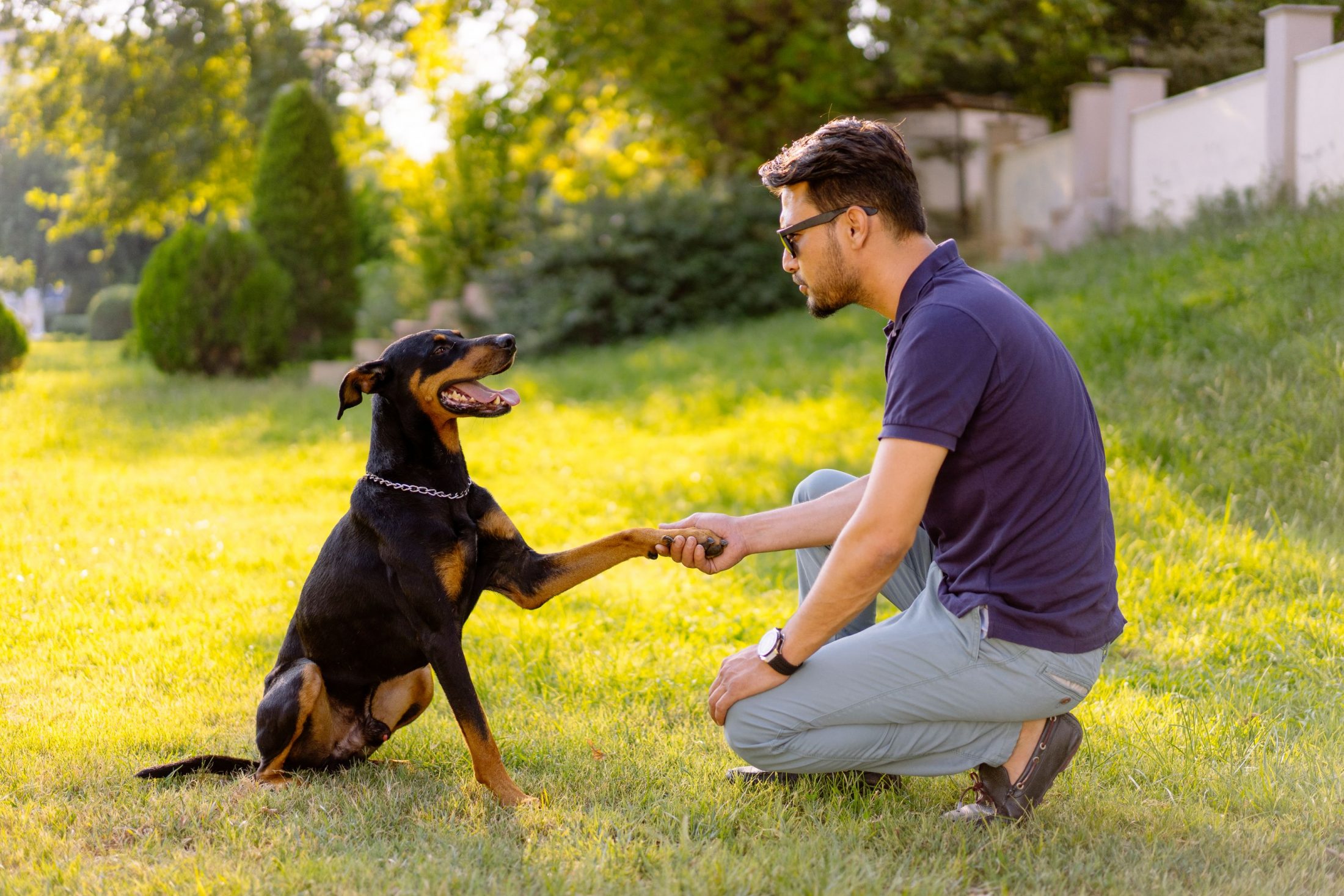
Have you ever met someone who was equally exasperated with their dog’s behavior and unwilling to teach them better behaviors? It’s not only unfair to the animal, but it creates a tension in the home that’s entirely preventable. The basics of dog training are easy to approach, and when done correctly, sessions are fun and rewarding for both dogs and their owners. Because we know first-hand the powerful impact that dog training can have on the human-animal bond, True Care Veterinary Hospital is thrilled to help owners embark on this endeavor.
Laying the Groundwork
Despite some evidence to the contrary, dogs are hardwired to please their owners. As pack animals, they are motivated to earn or keep their place in the household’s hierarchy. For dog training, dogs must see their owners as their Alpha, or leader. Help them understand your authority with these gentle, yet straightforward, ways:
- Hold their gaze
- Assume confident body language
- Control what they value, such as food, toys, and enriching activities
Once they know that they answer directly to you, their boss, you will have more fun and better results at teaching them basic commands. When you and your dog look directly into each other’s eyes, the hormone oxytocin is released. Known as the love hormone, oxytocin is partially responsible for deepening a sense of mutual respect and affection when working together.
Positive Reinforcement
It might sound counterintuitive, but positive reinforcement training hinges on praising and rewarding the behaviors you want repeated, and ignoring the ones you want to see less of. For example, instead of reacting to a negative behavior like going to the bathroom inside the home, you simply redirect them to the place you want them to conduct their business. Stay neutral and calm. Do not scold or punish your dog, as this negative attention can inadvertently reinforce the behavior.
When your dog does something right, immediately follow up with a tasty treat, enthusiastic praise, and a back scratch. With persistence and patience, they’ll eventually seek only positive reactions from you. A handheld clicker can also help dogs make positive connections with good behavior and can be used solo or in tandem with treats.
Consistency Is Key
Dog training is something you and your dog can (and should) do every day, and throughout their life. They are never too old to learn new skills!
Keep daily sessions short, free of distractions, and rewarding. Always end on a high note, and long before they tire, grow bored, or anxious.
The basic dog-training skills include:
- Sit
- Stay
- Come
- Down
- Off
- Heel
- Leave It
- Drop It
While mastery of these definitely makes it easier to share space, a dog that obeys without resistance or delay is more likely to stay out of traffic. It also greatly reduces the risks of getting into fights with other animals, giving chase, getting lost, or getting into trouble for chewing, digging, or other destructive behavior.
Dog Training for the Win
February is Dog Training Education Month, and our veterinarians and staff members are happy to assist you with locating local resources. Please call us at (732) 677-2180 with any questions or concerns, and good luck!

